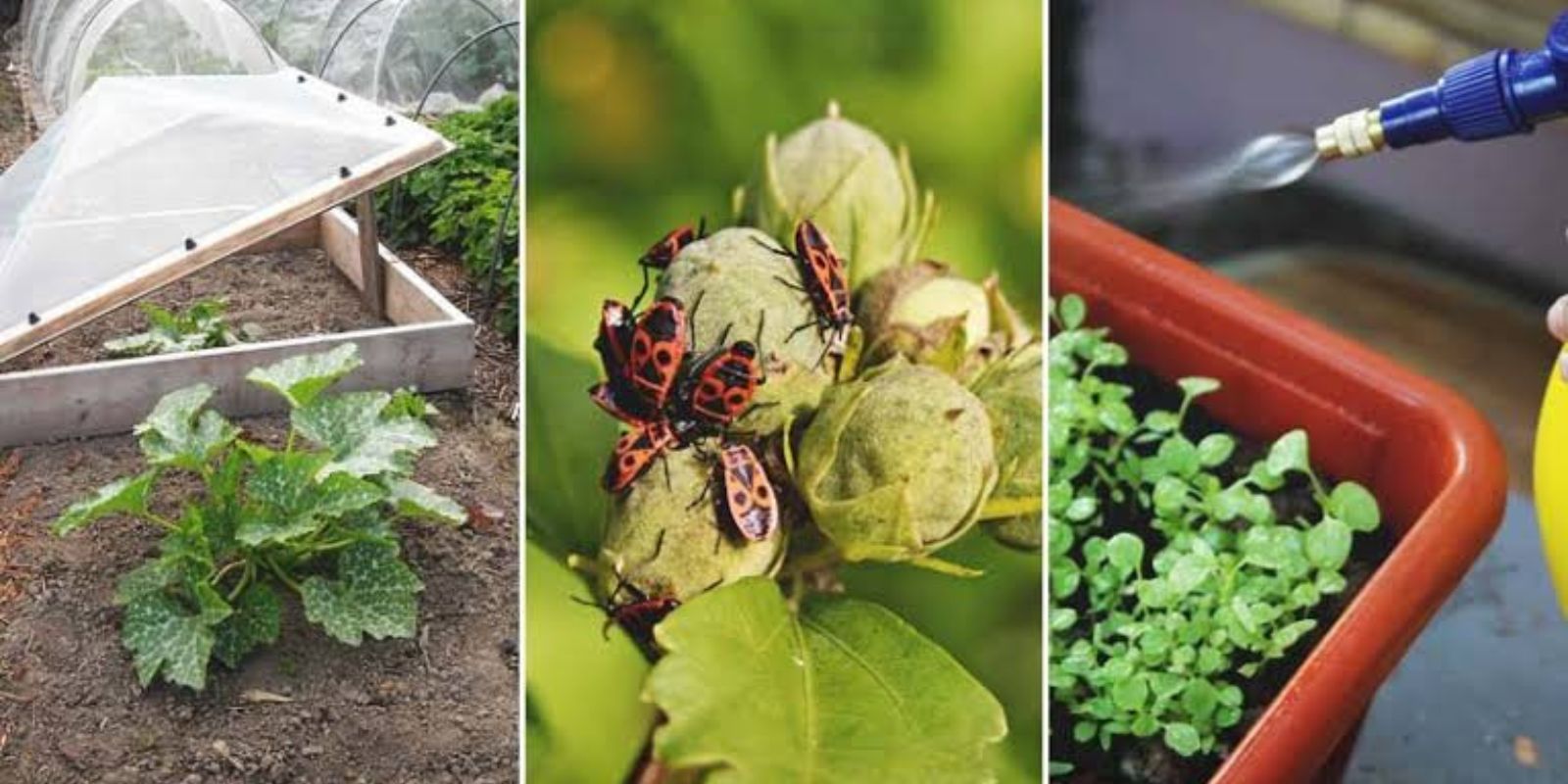Insects can wreak havoc on your garden, but relying on harsh chemical pesticides isn’t always the best option. Natural methods to protect plants are not only safer for your health but also better for the environment. By using eco-friendly techniques, you can effectively keep pests at bay while fostering a thriving and sustainable garden. Let’s explore some of the most effective natural methods for protecting plants from insects.
Why Choose Natural Pest Control?
- Eco-Friendly: Chemical pesticides often harm beneficial insects and disrupt ecosystems. Natural methods preserve biodiversity.
- Safe for Humans and Pets: Using organic solutions ensures that your garden remains free from harmful residues.
- Cost-Effective: Most natural remedies use easily available ingredients, saving you money.
- Promotes Plant Health: Natural pest control methods often improve overall plant health by enriching the soil and deterring pests without causing stress to the plants.
Effective Natural Methods to Protect Plants from Insects
1. Introduce Beneficial Insects
Not all insects are harmful. Some, like ladybugs, lacewings, and parasitic wasps, are natural predators to common garden pests such as aphids, mites, and caterpillars.
- How to Attract Them:
Plant flowers like daisies, marigolds, and yarrow to attract these beneficial insects. Provide water sources like small dishes with pebbles to create a habitat. - Benefits:
Beneficial insects naturally control pest populations without harming your plants.
2. Companion Planting
Companion planting involves growing certain plants together to repel pests or enhance growth. Some plants naturally deter insects with their scent or chemicals.
- Examples of Companion Plants:
- Marigolds: Repel nematodes and aphids.
- Basil: Keeps flies and mosquitoes away.
- Garlic and Onions: Deter aphids, Japanese beetles, and snails.
- How to Use This Method:
Plant these companions around vulnerable crops, such as tomatoes, lettuce, or beans, to create a natural defense system.
3. DIY Neem Oil Spray
Neem oil, derived from the neem tree, is a powerful natural insecticide that disrupts pests’ life cycles without harming beneficial insects.
- Recipe:
Mix 2 tablespoons of neem oil with 1 gallon of water and add a few drops of mild dish soap. Shake well and spray on plants weekly. - Target Pests:
Neem oil works well against aphids, whiteflies, spider mites, and more.
4. Homemade Traps
For specific pests, you can create traps using items you already have at home.
- Sticky Traps: Use yellow sticky cards to trap flying insects like whiteflies and fungus gnats.
- Vinegar Traps: Mix apple cider vinegar with a drop of dish soap in a shallow bowl to attract and kill fruit flies.
- Placement: Place these traps near affected plants or problem areas for maximum efficiency.
5. Garden Cleanliness
A tidy garden is less inviting to pests. Dead leaves, fallen fruit, and other debris can become hiding spots for insects.
- What to Do:
- Regularly remove dead plant material.
- Weed the garden frequently to reduce habitats for pests.
- Avoid overwatering, as damp soil attracts pests like slugs and fungus gnats.
6. Essential Oil Spray
Essential oils like peppermint, eucalyptus, and rosemary are natural insect repellents.
- How to Make the Spray:
Mix 10 drops of essential oil with 1 liter of water and add a drop of dish soap to help the mixture stick to leaves. Spray on plants as needed. - Best For:
Repelling ants, spiders, and some types of beetles.
7. Handpicking Pests
For larger pests like caterpillars, beetles, and slugs, manual removal is a simple and effective method.
- How to Do It:
Inspect plants regularly and pick off visible pests. Drop them into a bucket of soapy water to prevent them from returning. - Best Time:
Early morning or evening, when pests are more active.
8. Mulching and Barriers
Mulching helps protect plants by creating a physical barrier that deters pests and suppresses weeds.
- What to Use:
Organic mulches like straw, wood chips, or shredded leaves. - Physical Barriers:
Use row covers or fine mesh netting to keep pests like cabbage moths and grasshoppers away from plants.
9. Encourage Birds and Other Natural Predators
Birds, frogs, and lizards can help control pest populations.
- How to Attract Them:
- Place bird feeders and water bowls in your garden.
- Avoid using harmful chemicals that can deter or harm these natural predators.
- Why It Works:
These creatures act as a secondary line of defense against pests, reducing your need for intervention.
Monitoring and Adjusting
Consistent monitoring is key to preventing infestations. Check plants regularly for signs of damage or the presence of pests. If one method isn’t effective, try combining it with another for better results.
Conclusion
Protecting plants from insects naturally is not only effective but also contributes to a healthier environment. By introducing beneficial insects, using companion planting, creating DIY sprays and traps, and maintaining a clean and inviting garden, you can ensure your plants thrive without resorting to harsh chemicals.
What natural methods have you tried in your garden? Share your tips and experiences in the comments below! 🌱

